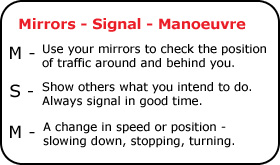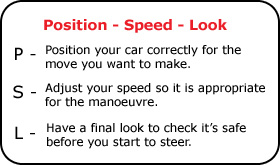Moving Off In A Car
Signal if Necessary
Signals should be given to help other road users, to warn or inform them of your intent. When moving off, if you see oncoming traffic or pedestrians, you must signal. Timing of the signal is important. You must not signal too early, or too late or for too long.


Stalling the Car
If you stall the car try and keep calm. This isn’t usually considered a serious fault. However, if you panic, restart the engine and drive off without checking your mirrors and blind spot, it will be. If you do stall the engine at any time during your test you must follow this procedure:
- Put the handbrake on.
- Select neutral.
- Restart the engine.
- Go through the correct safety check again before moving off.
Road Position
Once moving you will need to steer to a normal driving position. This is about a metre from the kerb. To do this, turn the steering wheel slightly to the right as you move off. When you reach the correct position, turn the steering wheel slightly left so that you can steer a straight course.
On your driving test, when moving off, the examiner will expect you to:
- Move off safely and under control on a level road, from behind a parked vehicle and on a gradient
- Use the MSM/PSL routine
- Use all mirrors to check the road is clear
- Check your blind spot for traffic and pedestrians
- Make balanced use of the accelerator, clutch, brakes and steering
- Use the appropriate gear.
- If at any time you decide it is not safe to move away you must restart the safety checks again.
